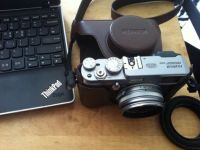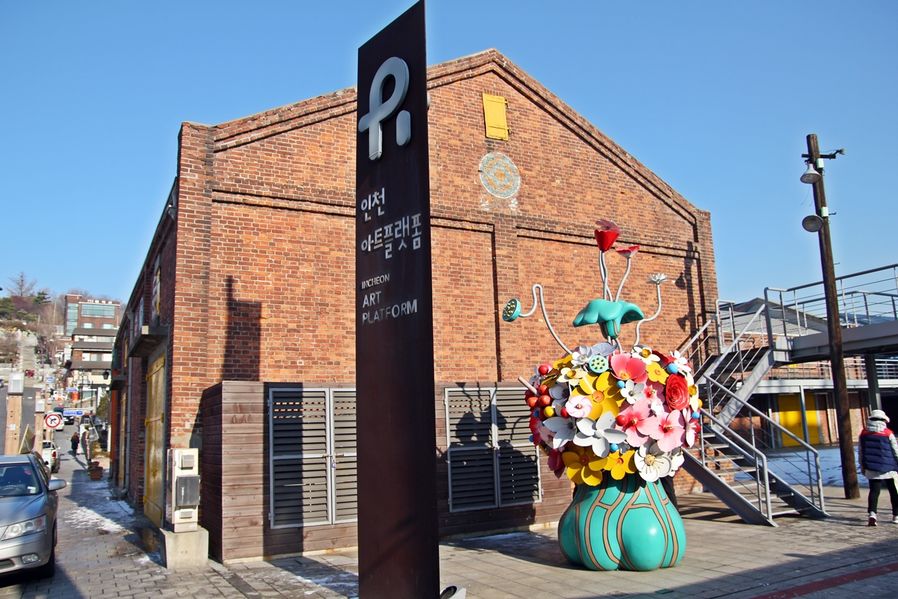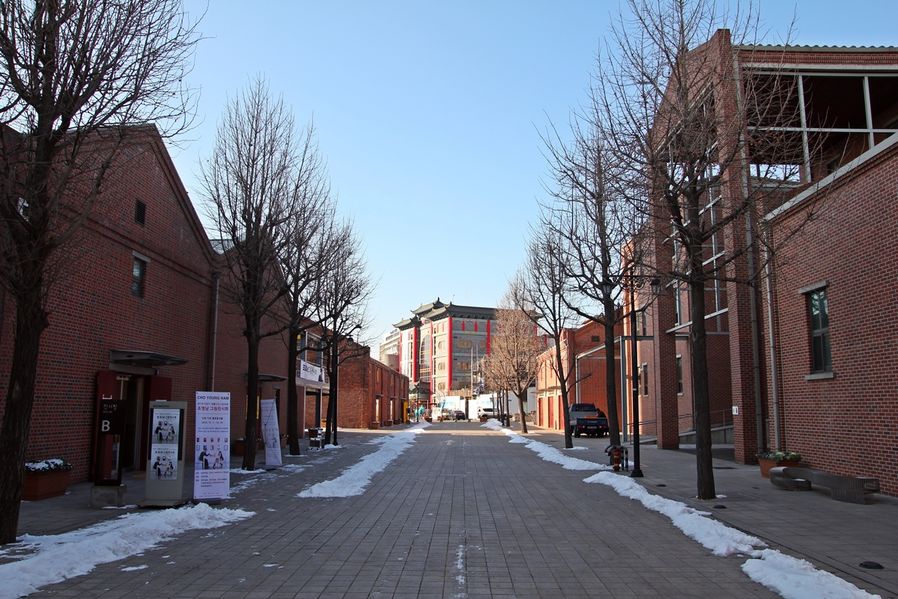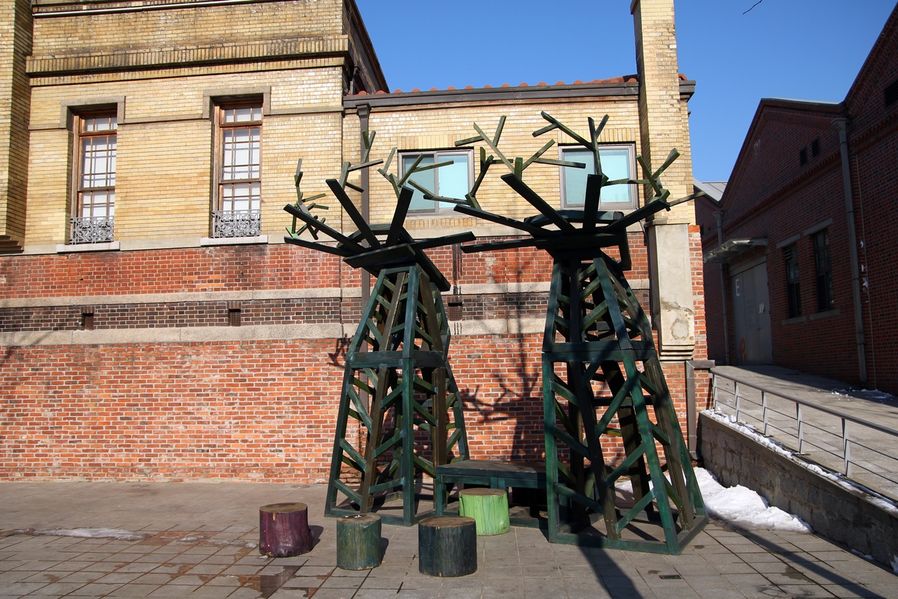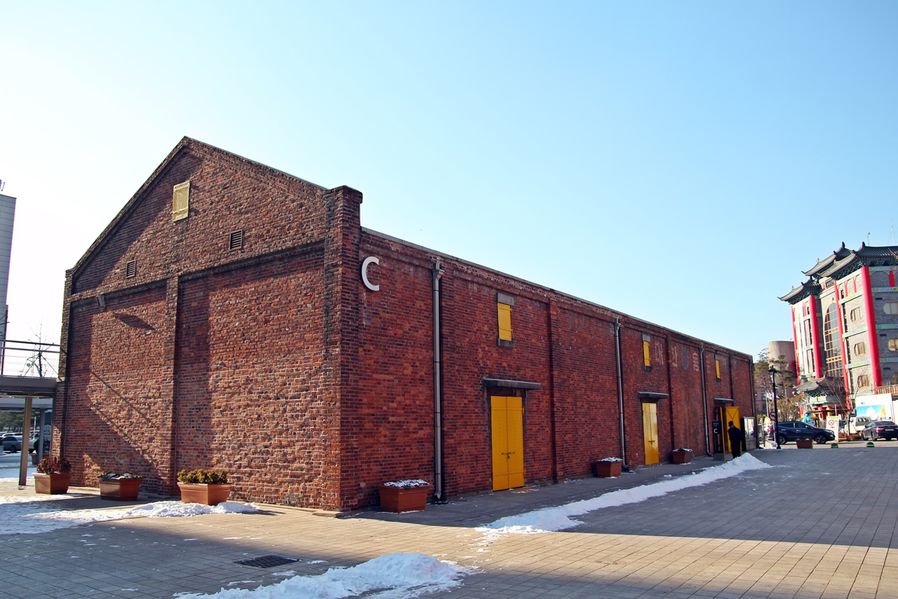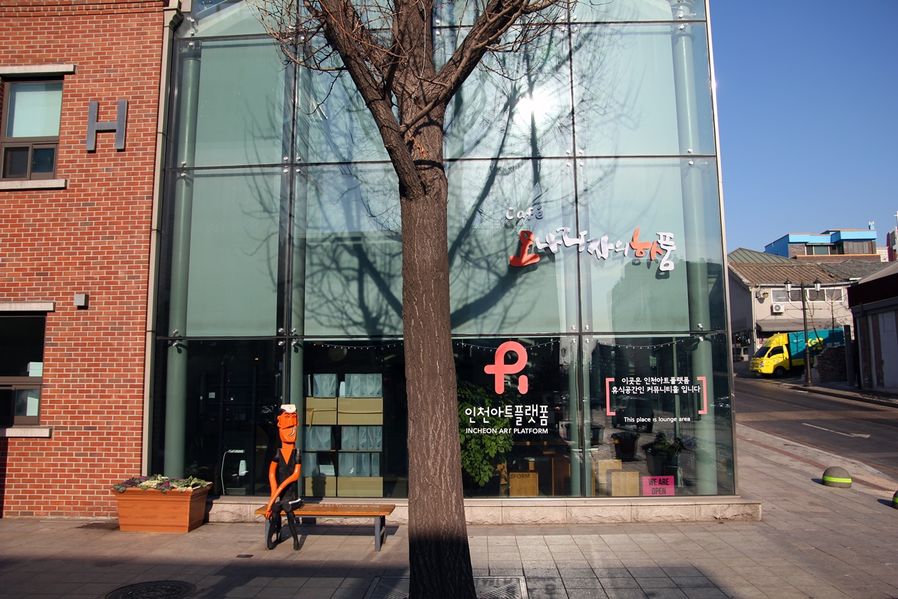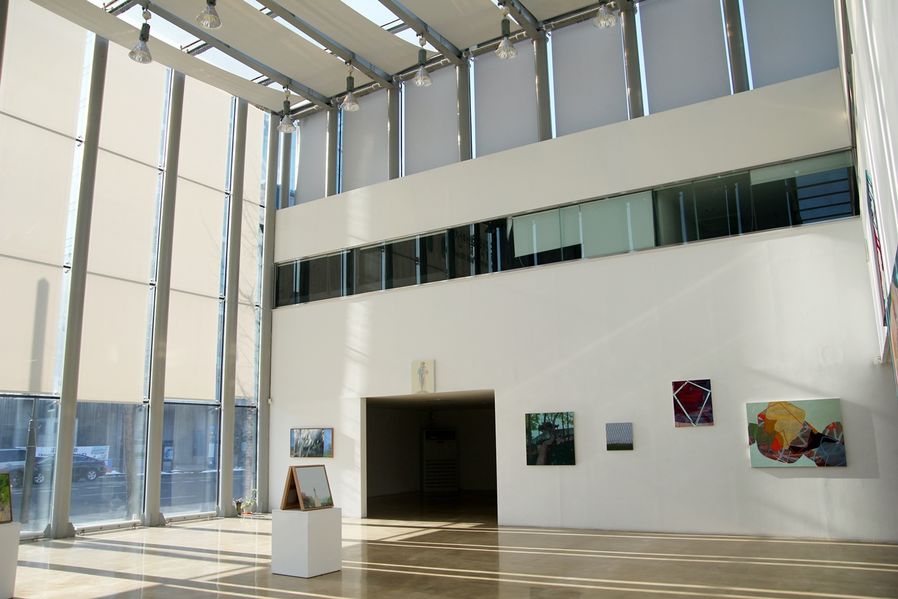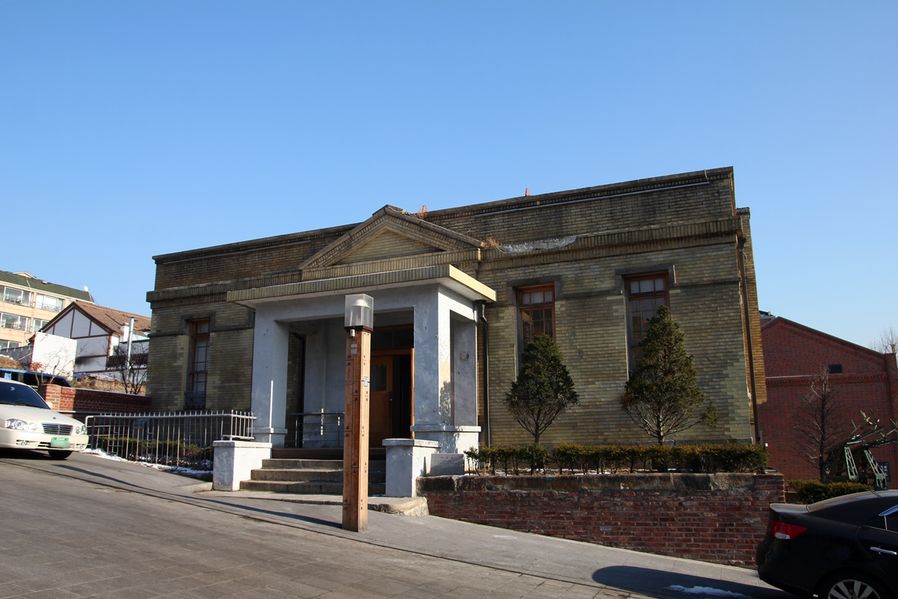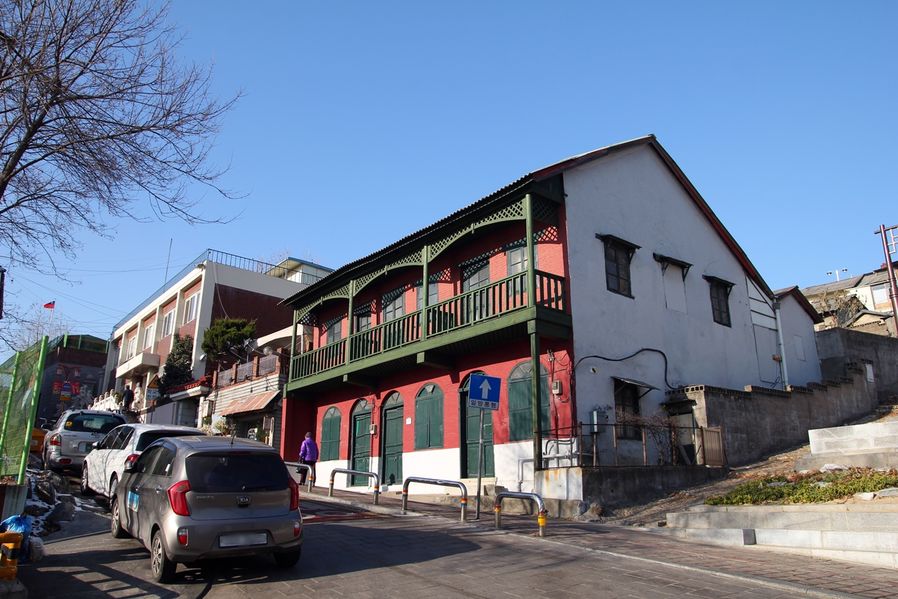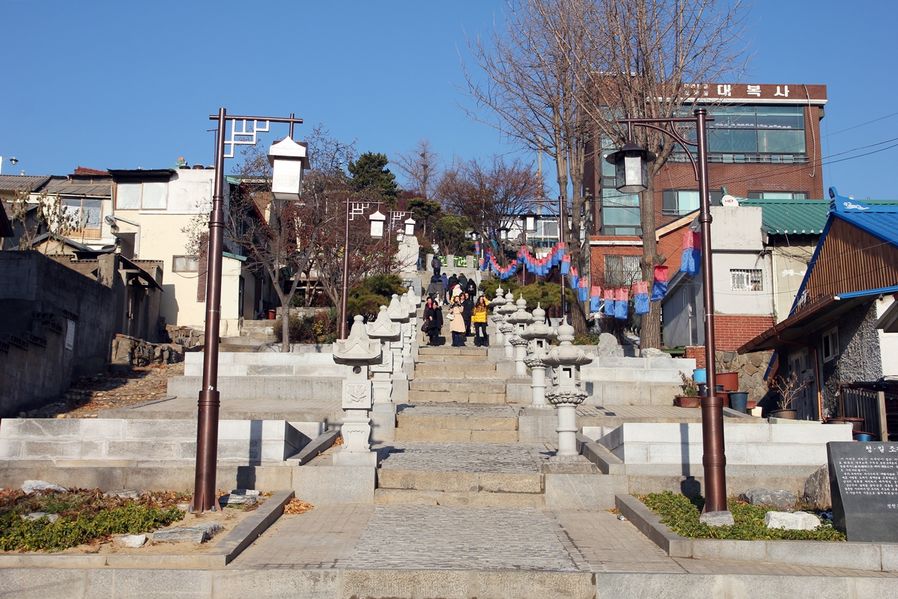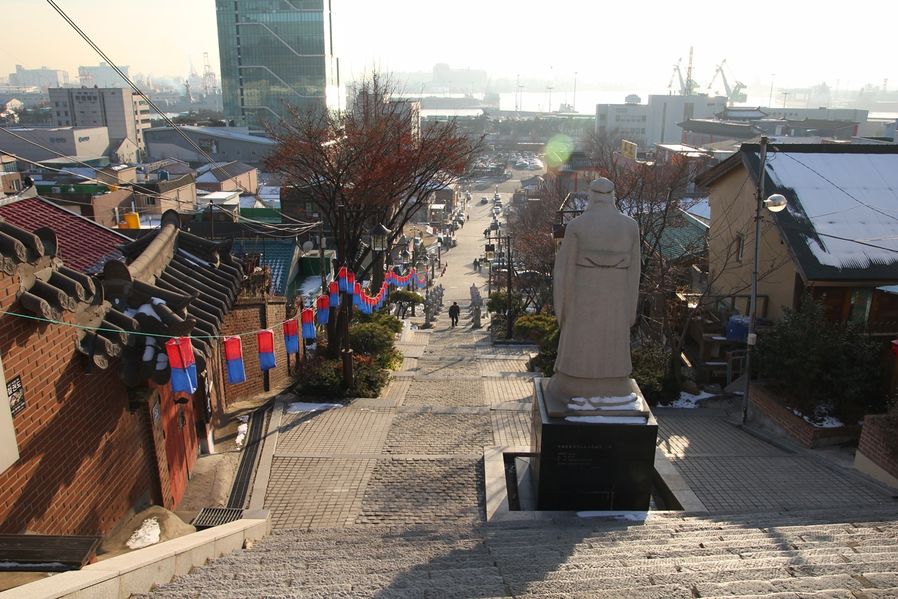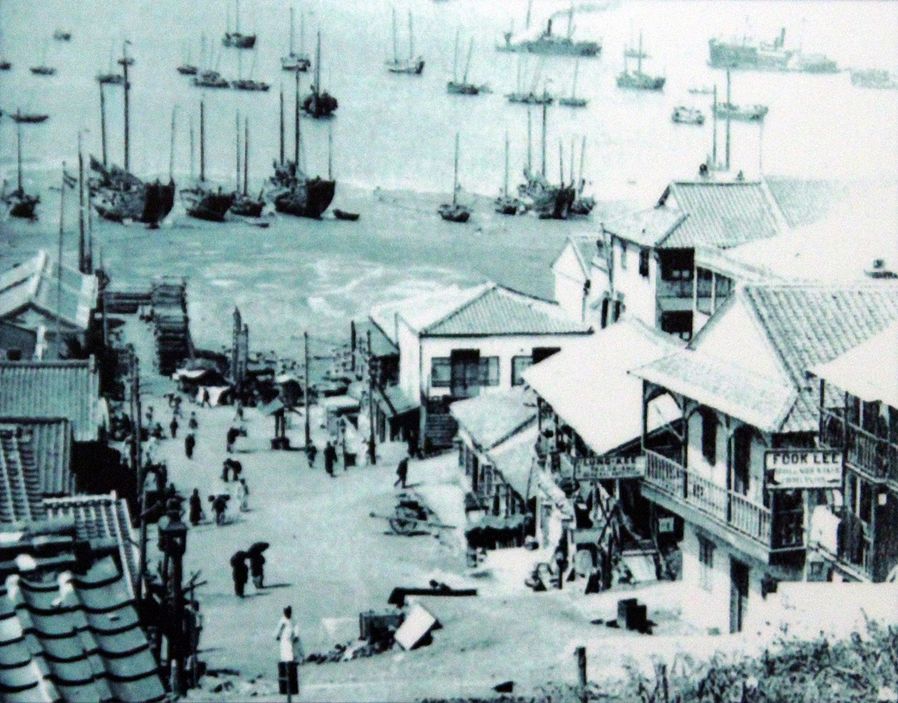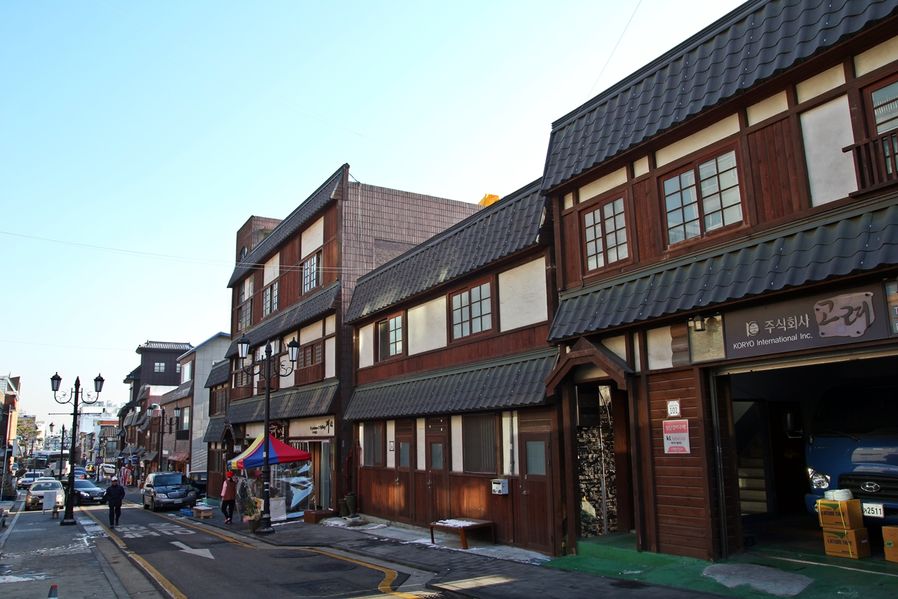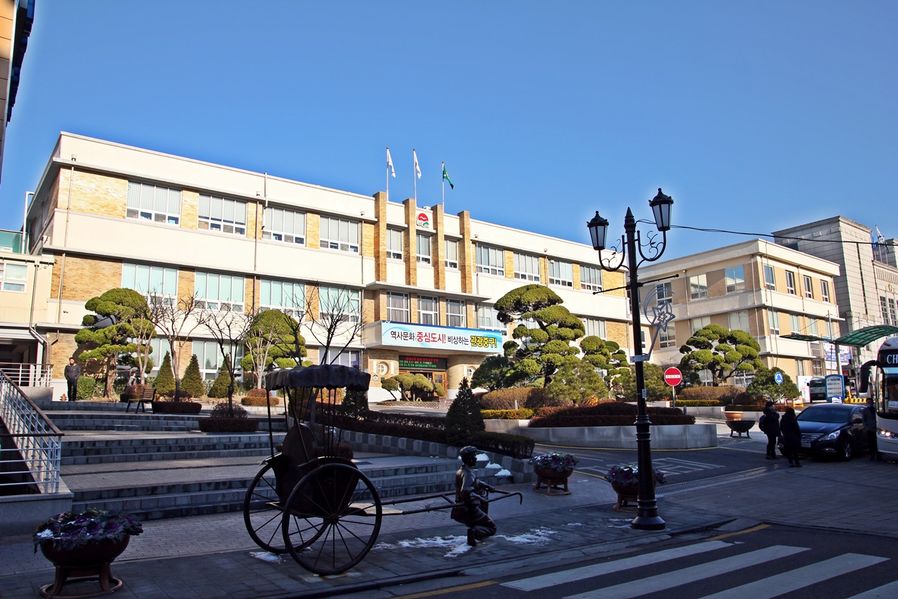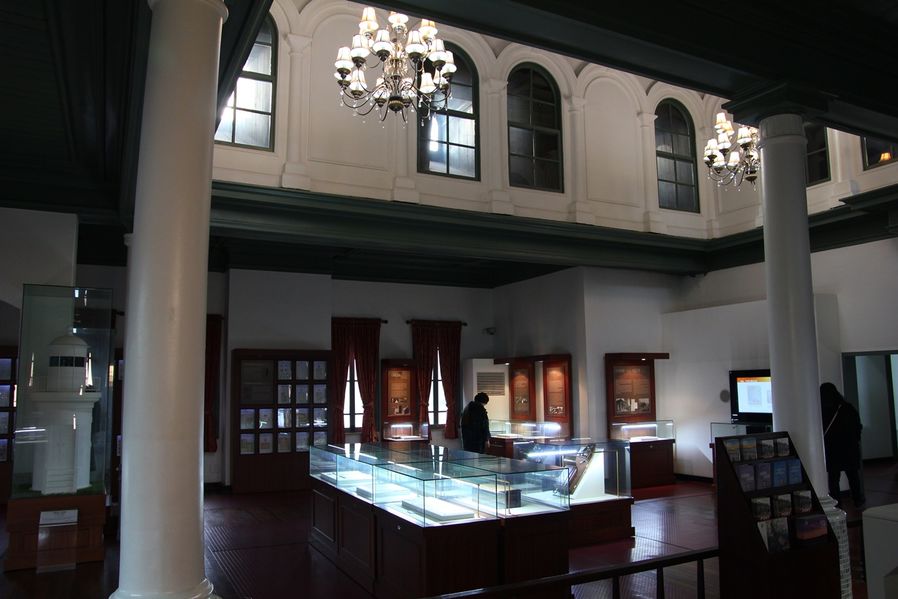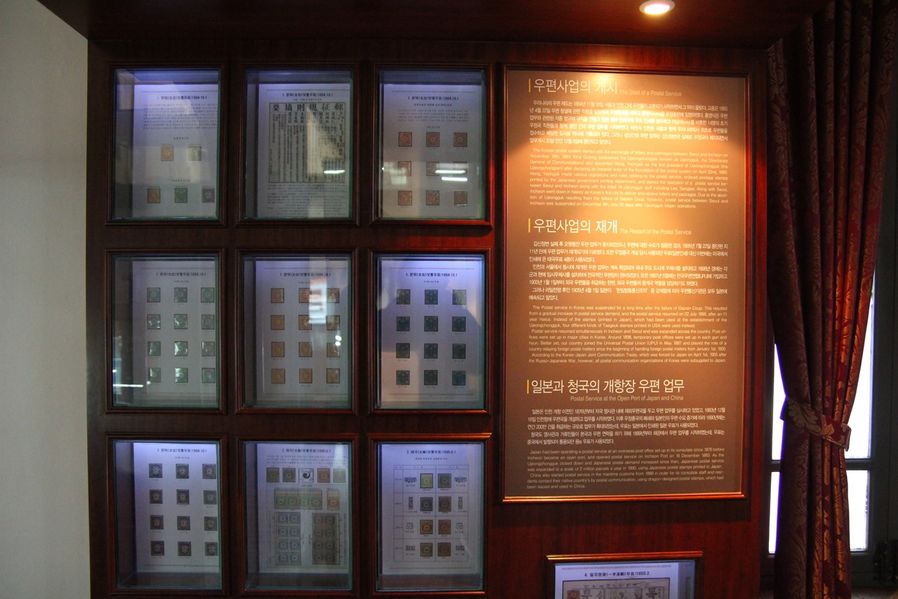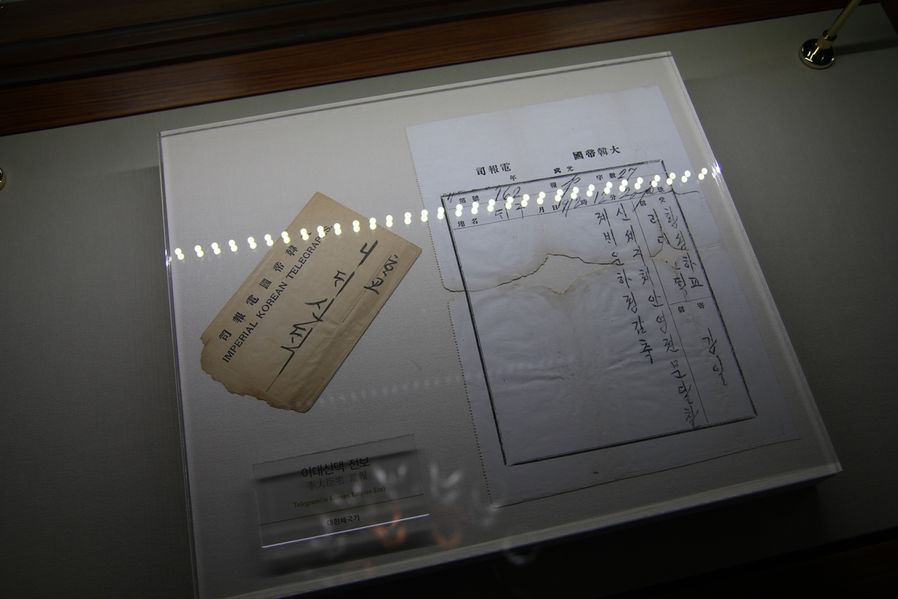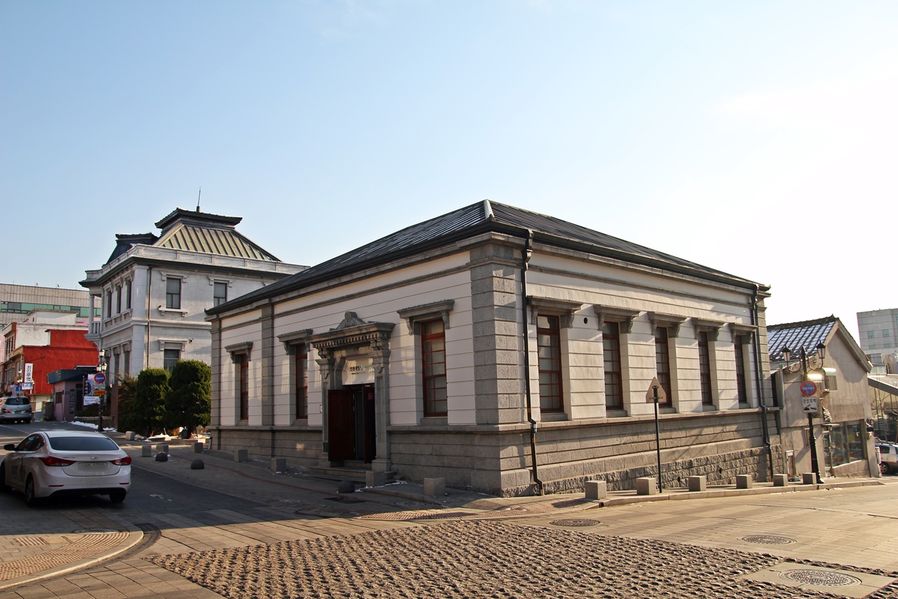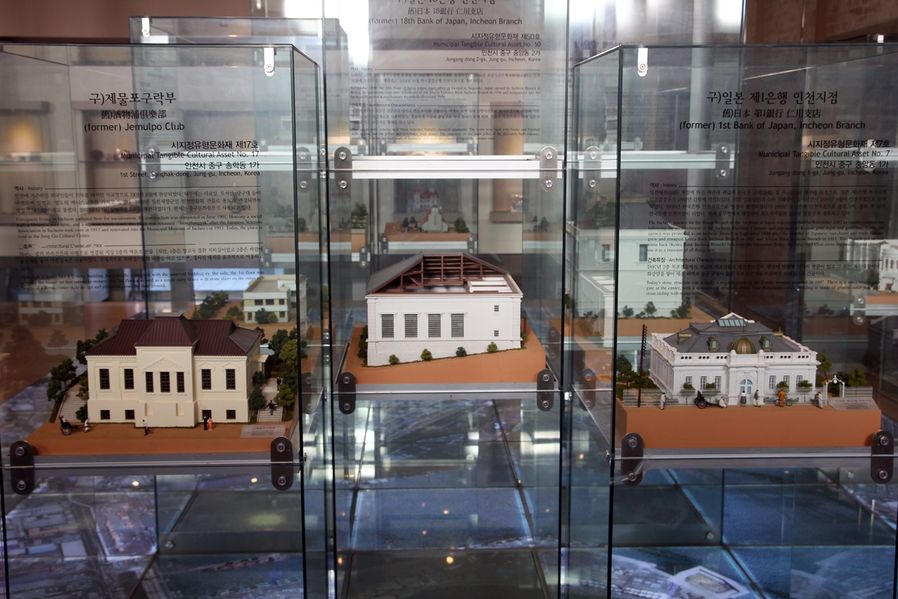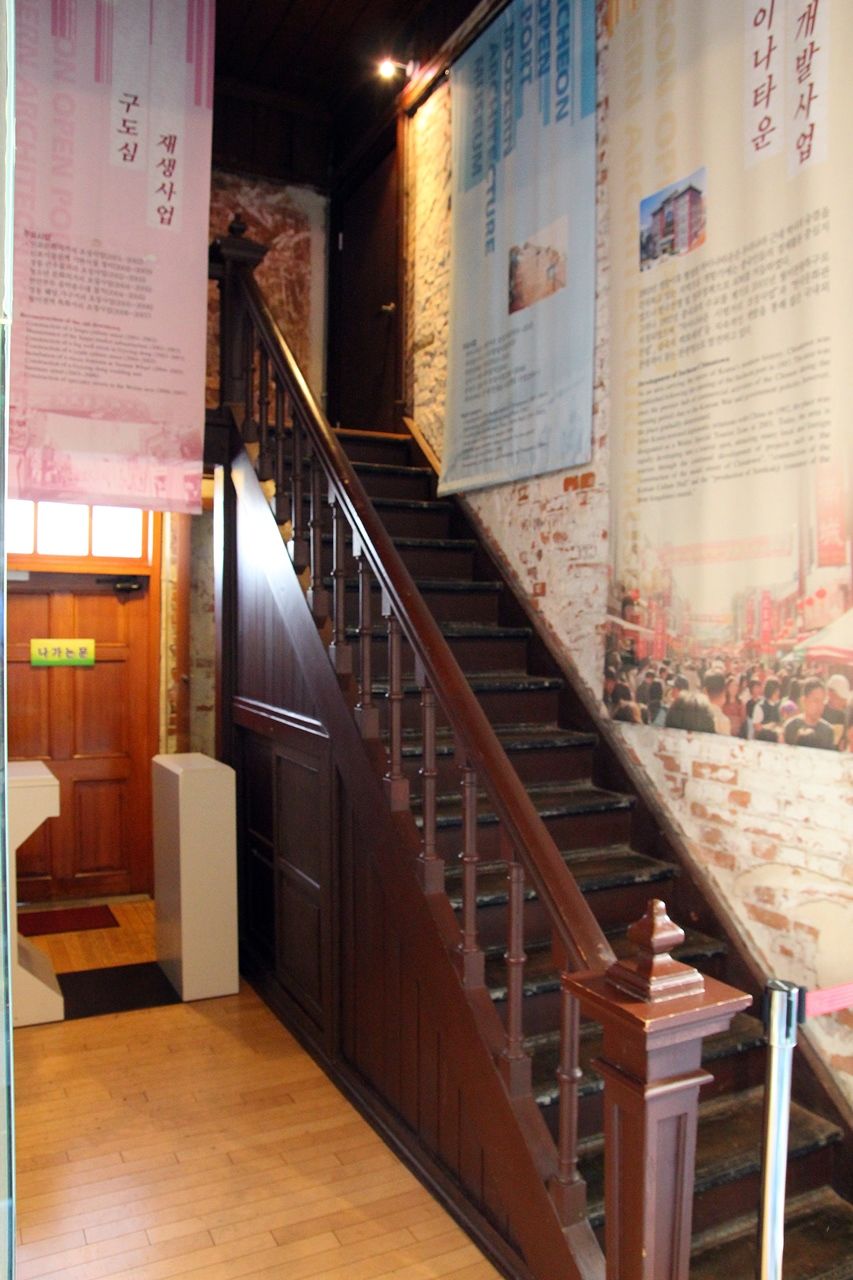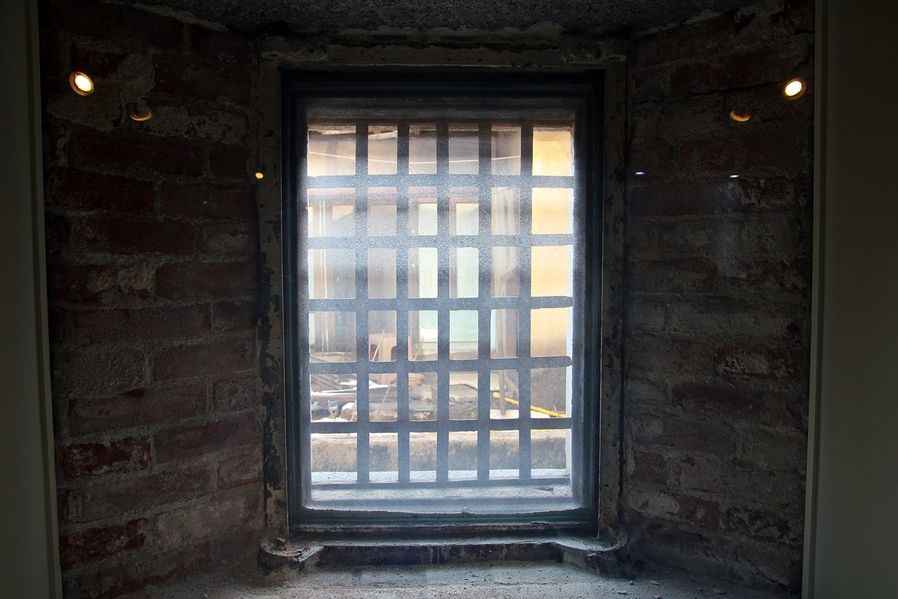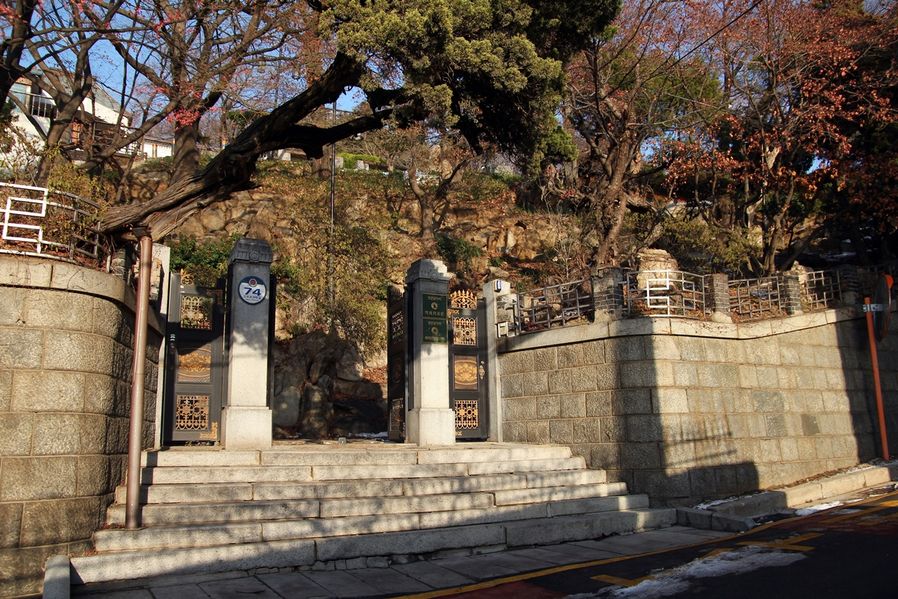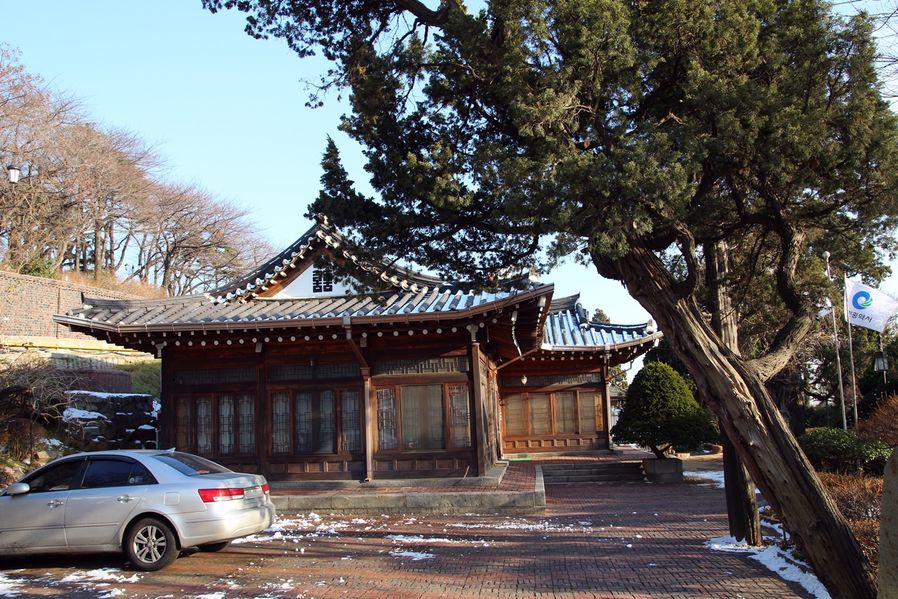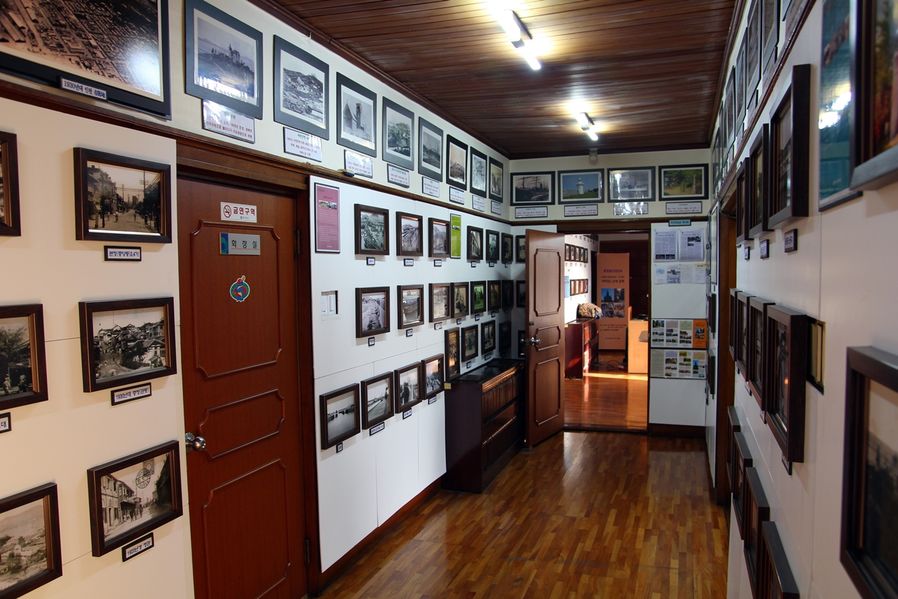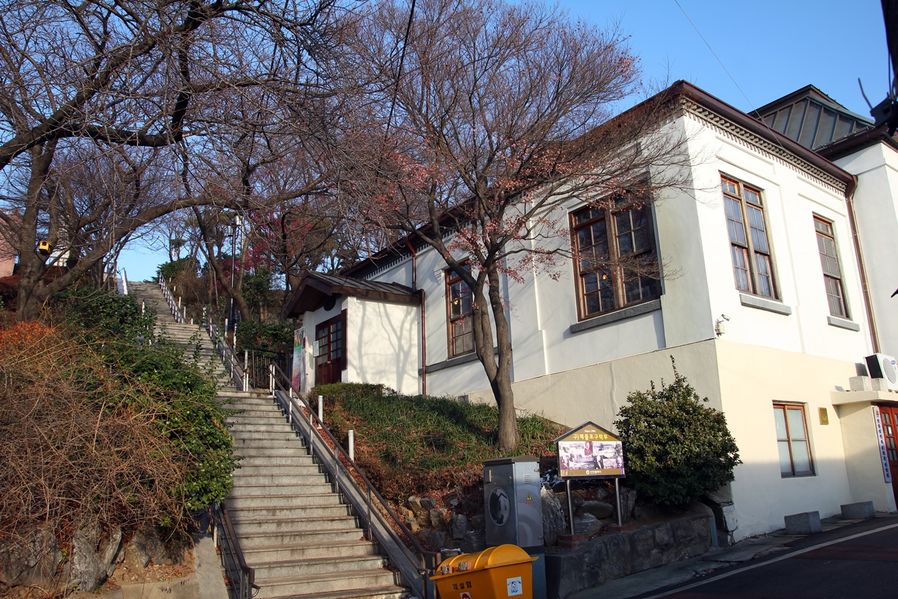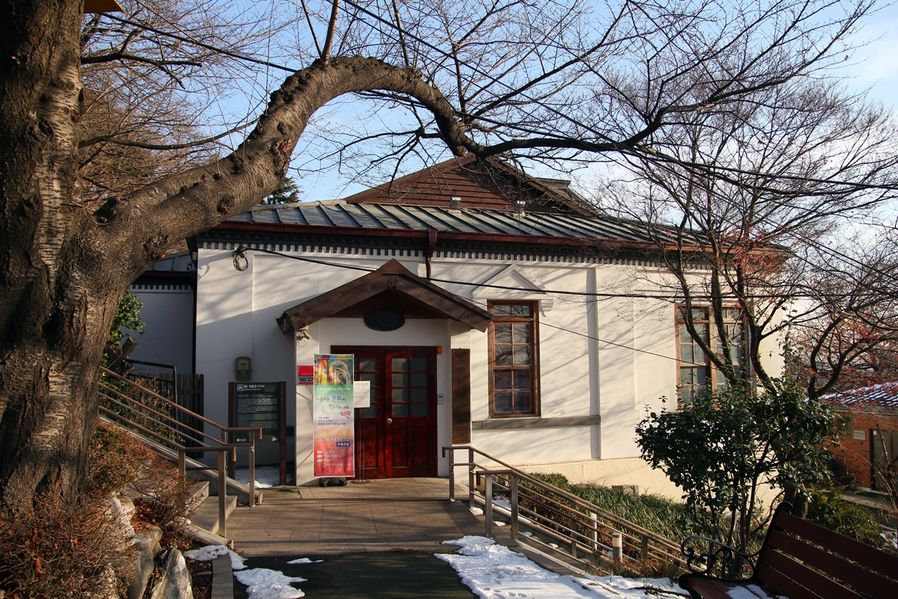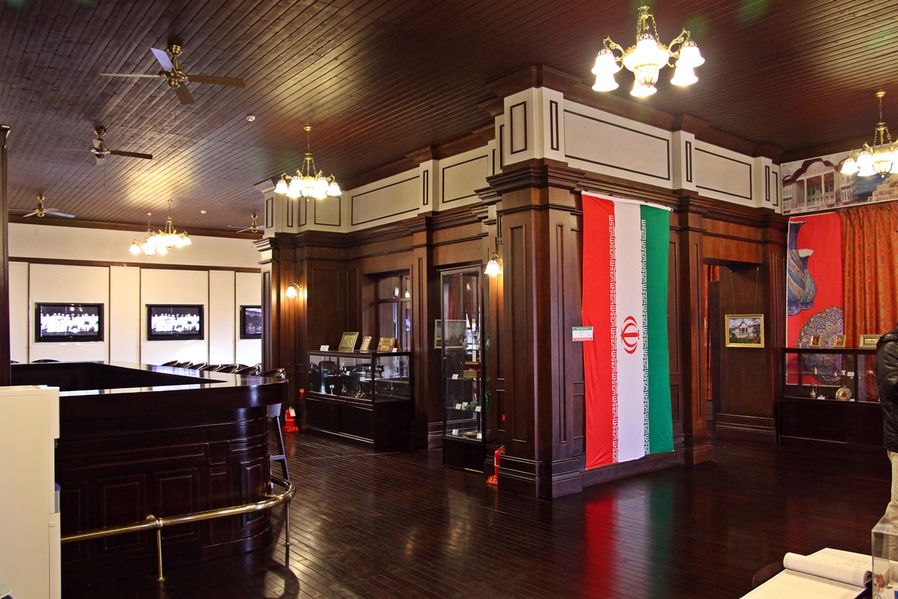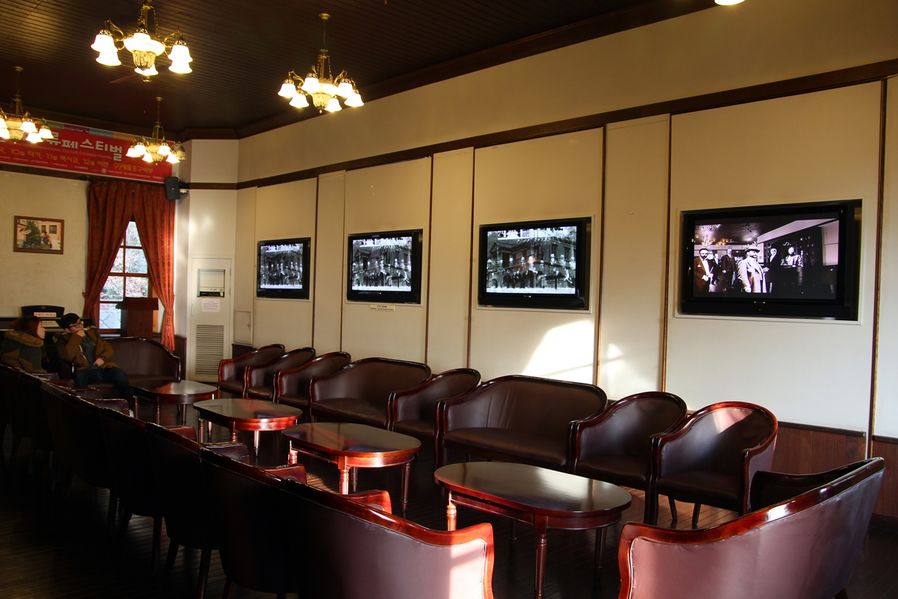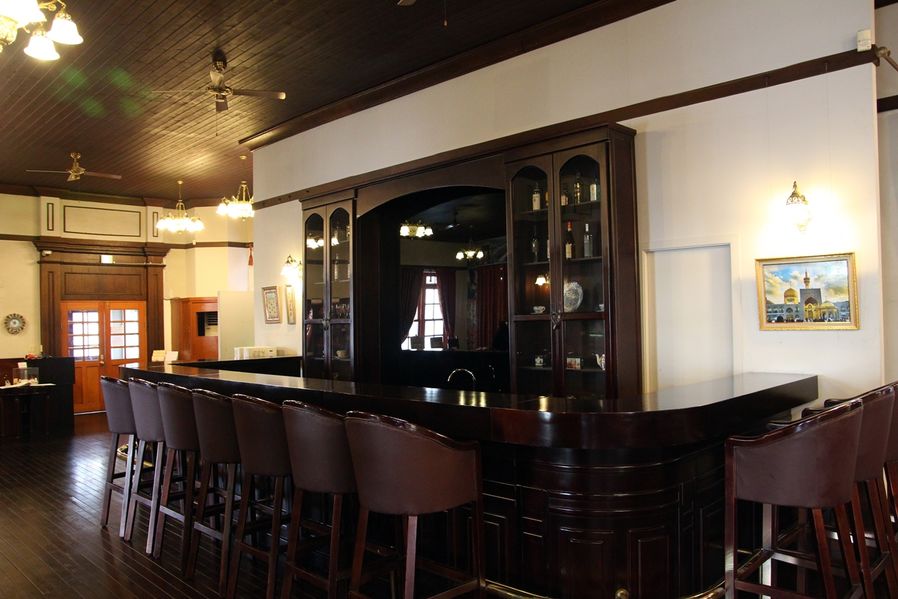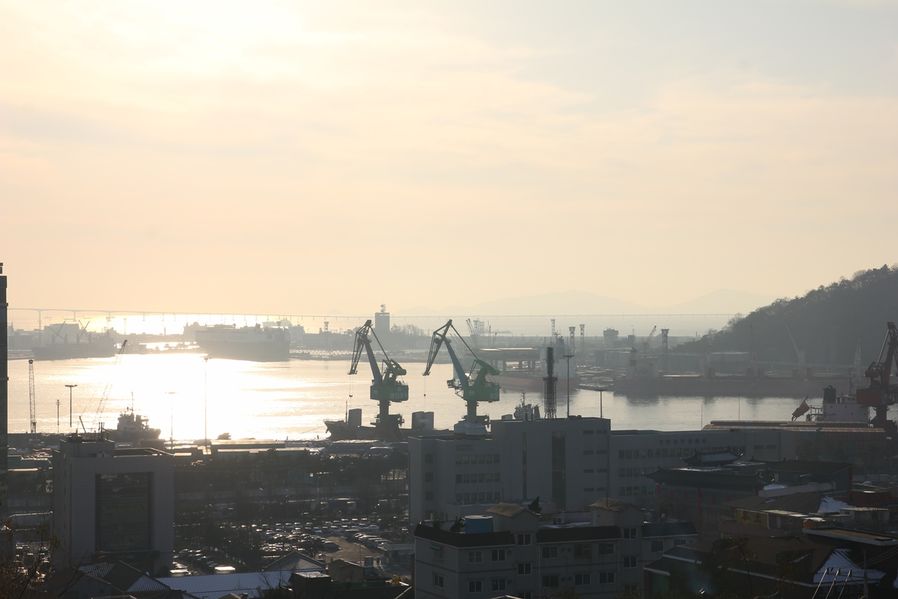-
Start
-
China Town
-
Sinseungbanjeom
-
Street Food
-
Donghwa Village
-
Songwoldong
-
Wolmido
-
Orakai
-
Sinbokgwan
-
Central Park
-
Akino Kitchen
-
Museums
-
Finish
Joseon has been Dynasty over 500 years since it was established in 1392. There’s no country in the whole world that has maintained Dynasty over 500 years except for Joseon. Some might say the Holy Roman Empire has 1,200 years of history but that was an Empire, not Dynasty. Although the Kingdom of Spain lasted 500 years old but it was not Dynasty and Napoleon put his brother on the throne. And the only country in the whole world that lasted 518 years as Dynasty, Joseon, collapsed by Japanese force operations and had humiliating Japanese colonial era.
The Japanese colonial era begins at the open port area near Incheon Port that I’m about to show you now. Ironically, Korea has been modernized because of this. Open port area refers to Incheon Jung-gu Office area that we had to open Joseon cultures to other countries and forced to have modern cilvilization according to Japan-Korea Treaty of 1882. Because of this, this area is like an exhibition of modern buildings like storage, bank and consulate that have been handed down until now. Let’s take a look.
First of all, this is Incheon Art Platform close to Incheon Port. This place is filled with storage buildings used at the port in modern times and it has been changed into Culture and Art Complex by Incheon-si. This place provides creative space and display space for talented artists and free and non-free exhibitions. Those who’re interested in art would want to try here. Old buildings and Culture and Art Complex in those buildings are a good match.
Old storages lining up turned into workrooms and exhibition rooms for artists. In this 5,620 m2 big space, you’ll see creation studios, workshops, archives, exhibitions and stages where you can feel the lives of people when the port was open as you walk along the hallways. If you need a rest, you can read a book or displays at a cafe on the first floor of H Building.
Art works showing unique imaginations of young artists are also displayed on the streets as well.
This place was used as storage of delivery company since 2000 but it’s neatly cleaned and turned into an artist space. Yellow door of storage made of red bricks looks so pretty.
This is the small cafe in H Building that I told you about. ‘Monarisaui Hapum(yawn of Mona Lisa)’ offers coffee at a reasonable price so if your legs hurt during the trip, you might as well get a rest here.
Something’s written on a bench with an interesting character. “Smile. I can read happiness from your eyes.” Is it from a tourist’s eyes? ^^*
In the exhibition room, there are paintings and image arts as well. I couldn’t take pictures of them because they’re made by artists but if you love arts, this could be a good place for you.
As I climbed up a little, there stood an old building. This used to be Incheon branch office of Nippon Yusen Kaisha. Nippon Yusen Kaisha used to deal with distribution at Incheon Port when it was open and it still remains its original structure even if it was built in 1888. It’s currently used as an office for Incheon Art Platform.
The building still remains. This house was built in Chinese style and a Chinese old lady used to own this building when I came here a few years back but I am not so sure now. It is toward China between border of Qing concession and Japanese concession and built as a 2-story multipurpose building of bricks in 1939. The lady used to kindly show me around the house when she was out sometimes but it’s a pity that I couldn’t meet today.
To the right from Chinese house that I just showed, there are stairs that separates Qing and Japanese concessions. When you look at these stairs, left side is Qing concession and right side is Japanese concession and the interesting thing is that there are only Japanese style buildings in Japanese concession while many of buildings in Qing concession are Chinese style. You can tell the difference just by the look of stone lantern, can’t you?
You’ll see Confucius statue looking down when you get to the top of the stairs. This statue was donated by Qingdao in China after the establishment of diplomatic relations between Korea and China. Do you want to know how it looked like before that?
Just like that. It’s taken at the exact same place in the 19th century. In old times, it used to be ocean right under the concession. It’s made as land now and used as Incheon Art Platform.
Except for banks or public offices in Japanese concession, there were not many houses left. But the building outer walls are decorated like a street in Japan. You can’t collapse the buildings anyway so I appraise their efforts.
The building behind Japanese rickshaw was Japanese Consulate built in 1883. Japan was the first country to have built Consulate after opening Incheon Port and it was built as 2-story wooden building in order to protect Japanese living in the concession. Later, the Japanese Government-General of Korea was built and used as Incheon-bu office building and it was remodeled as current building in 1933. After the independence, it’s used as Incheon City Hall and currently used as Jung-gu Office.
Quite attractive Renaissance styled stone building, isn’t it? This used to be Japanese 1st Bank although it’s Open Port Museum now. This bank was in charge of custom duty of items delivered over the sea and they used to buy gold produced in Korea as well as it took care of deposit and loans like a bank today. They charge us 500 won per person but as I said earlier when I showed you China Town, you can look around all the museums here if you buy 1,700 won ticket.
In the open port museum, 669 items were displayed including 321 relics from the open port in 1883 to the beginning of Japanese colonial era in 1910.
The impressive thing is the VERY FIRST KOREAN STAMP that was sold to European collectors such that it was never used here because of Gapsin Coup(1884). They’re all originals.
Other than that, you can see mails and relics used since the open port to Japanese colonial era and I say there were interesting items than I had expected although they are not that fancy. The item above is a transference forwarded to Lee Dae-sim written in original Korea characters from Korean Empire era. But I couldn’t recognize anything. I wish they are translated. ^^*
This is Incheon Open Port Area’s Modern Architecture Museum that used to be Japanese 18th Bank. Although it was open to rule the finances in Korea in 1890, it was used as a cafe by 1992 and open as a museum again. Japanese style roof tiles on wooden truss looked so exotic. A cathedral of the Anglican Church of Korea that was built around the same time also has similar roof.
Inside, there are pictures of Incheon by the time the port was open, and miniatures of buildings that do not exist anymore and old buildings that still remain are displayed as well. It looks like all the historical buildings of Incheon are gathered in one place. Maybe we can decide where to go next. ^^*
It’s fun to see displays here but personally, I had more fun to look at these buildings. When you climb up the squeaky stairs, you’ll go upstairs,
and when you enter a room randomly, you’ll see amazing windows that makes you feel like you’re in a bank in old times.
Right next to modern architecture exhibition hall that used to be Japanese 18th Bank, there stood a building that was used as Japanese 58th Bank. This was built in 1892 for exchange of old/new bills when the port was open and it dealt with trade finance and payment between Korea and Japan. It’s used as food service industry branch of Jung-gu, Incheon-si, and 2-storied French-styled brick building, slide-down windows, walls and pillars still remained. Can you notice how old it is by the look of black stairs?
As I climbed up the hill a little, there was a building that looks like the house of high-ranking official. It’s history museum where they discover, gather/organize and publish historical data. As it’s open to the public, this house with a beautiful yard used to be owned by a Japanese businessman during the colonial era. It’s been used by a social club after the dependence but it was purchased by Incheon-si, remodeled as traditional Korean house and used as a public residence of Incheon Mayor until 2001.
I saw an amazing tile-roofed house as I went up the stairs. I was told that 17 Incheon Mayors have been into this house and I’ll get inside.
It’s not just a place that collects and publishes materials but it also acts as a museum where you can see the history of Incheon with pictures. They’re displayed in the hallway in order of time so that we can see the history of Incheon at a look.
As I got out of back door of Incheon History Museum, there was an unique building here as well. This used to be Jemul Gurakbu building and Gurakbu(俱樂部) is Chinese letters of Japanese pronunciation of the word Club. Now that I mention it, I remember Japanese calling McDonald’s ‘Marudonaruku’ and Hot Coffee ‘Hotto Cohee’ when I was living in Japan for a year. ^^*
The entrance looks quite elegant and nice. By the way, you still remember the entrance to Chemulpo Club? This used to be the filming site of Piano, SBS drama in 2001. It was a very popular drama with a lot of famous actors and actresses, which is unimaginable now, including Jo Jae-hyeon, Jo Min-su, Kim Ha-neul, Go Su and Jo In-seong. This was used as the house of Jo Min-su, piano teacher. Let’s get inside.
This used to be a social club. The reason why this place was needed was because of the need of active exchange among member countries for the mutual benefits and adjustments as the concessions of countries were formed around the port after it was open. So Chemulpo Club was organised and they requested to Sabatin, a Russian architect, to build the building and completed in 1901.
Inside the building, there is a banquet hall, a social hall and a library for the purpose of this group and on the wall, a documentary of Incheon’s history was being played. There were chairs so you could rest your legs and watch TV.
I should say that Chemulpo Club’s history is full of ups and downs. It was first made for social activities of foreigners staying in Korea, used by Japanese Legion in 1914 after the abolition of concession system, by Japanese Women’s Association in 1934, by US Officers Club after the independence, by Korean Women’s Association in 1947, used as North Korean headquarters during the Korean War, and then used again as EM Club during Incheon Landing Operation. It’s been used by numerous organizations after the war so that you can’t recognise its original structure at all.
Climb up the stairs in front of Chemulpo Club and you’ll see the first western park in Korea called Liberty Park. This park used to located in many countries’ concessions that was also called ‘Gakguk(diplomatic) Park’ or ‘Manguk(international) Park’ but when the statue of Genera MacArthur was established here to celebrate Incheon Landing Operation in 1957, it was renamed as Liberty Park. There’s nothing special here but why don’t you feel freedom walking in front of the statue of MacArthur?
Incheon Port watching from Liberty Park is amazing, isn’t it? I could see Incheon Bridge leading to Incheon Port at the end of horizon over the ocean. If you’re from abroad, you’ve crossed that bridge!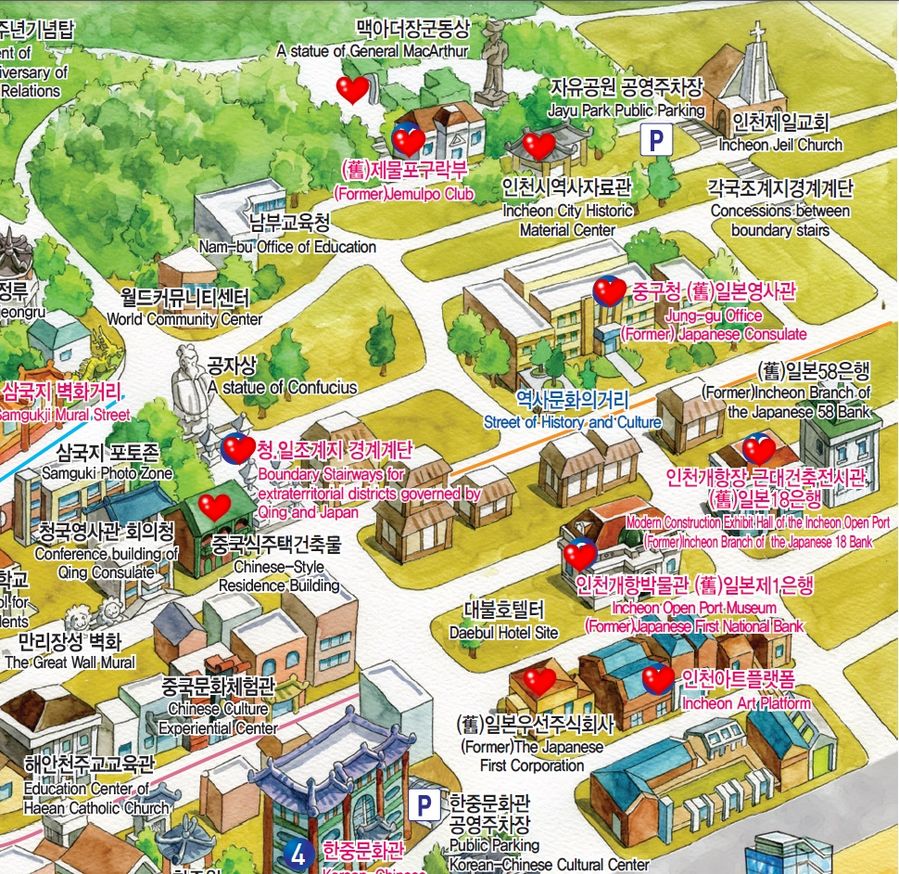
How was the open port area, the site of modern history? Right through this place, modern civilisation started by opening Joseon’s cultures to the world according to Japan-Korea Treaty of 1882. And it’s like a repository of modern cultural heritages as there are western modern buildings are altogether including consulates of different countries and banks. It’s one of places you shouldn’t forget to visit in Incheon. I marked my route on the map above.
Address : Haean-dong 1-ga area, Jung-gu, Incheon (인천광역시 중구 해안동1가 일대)









